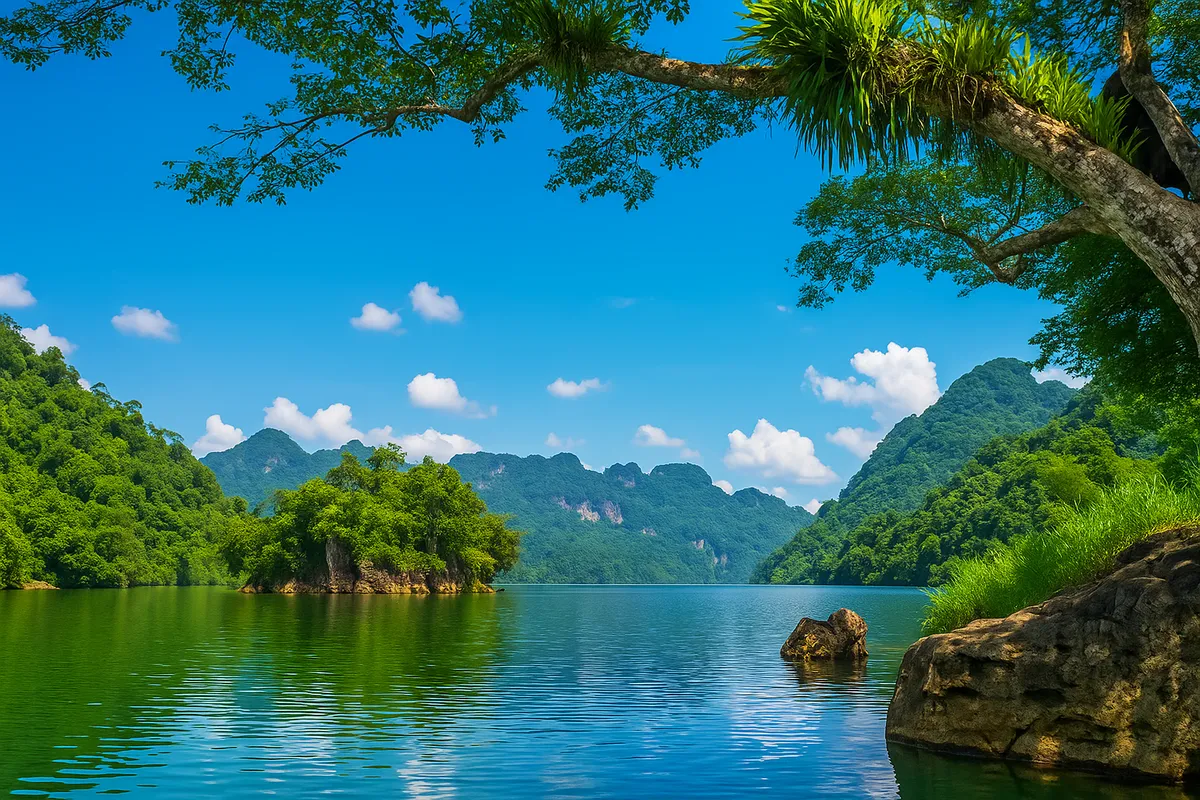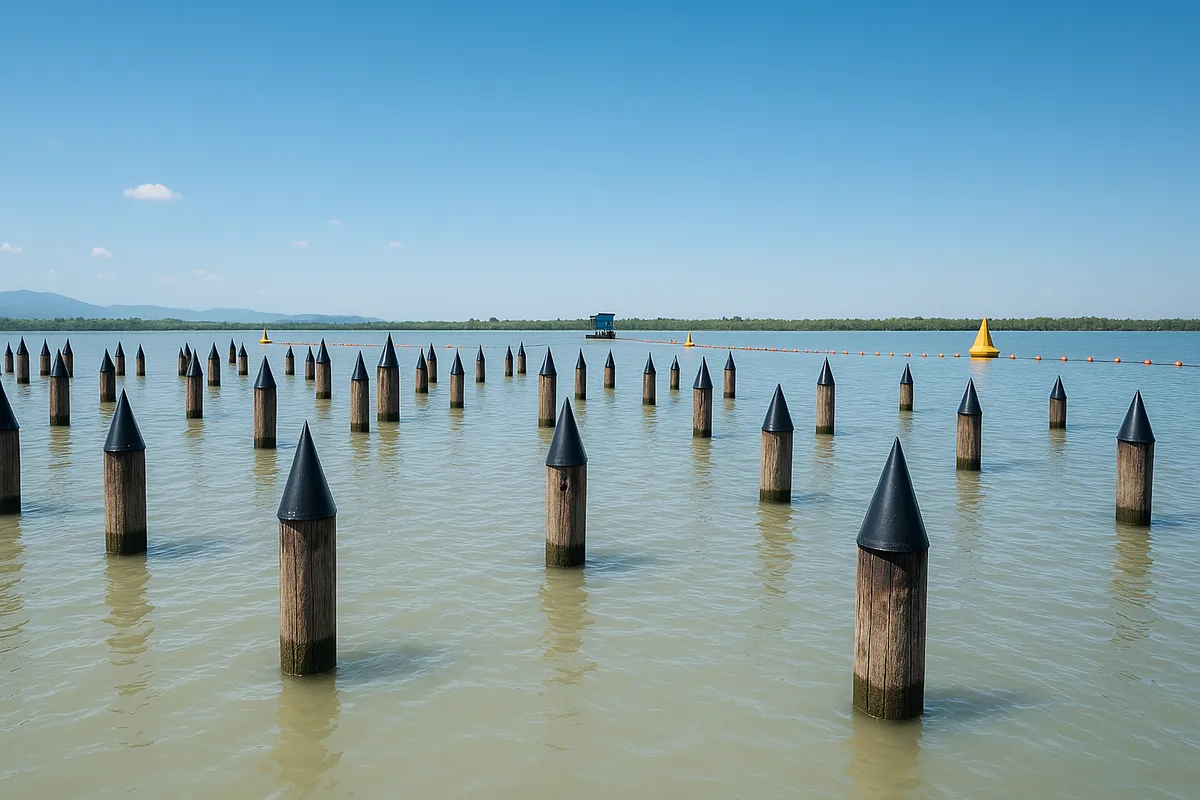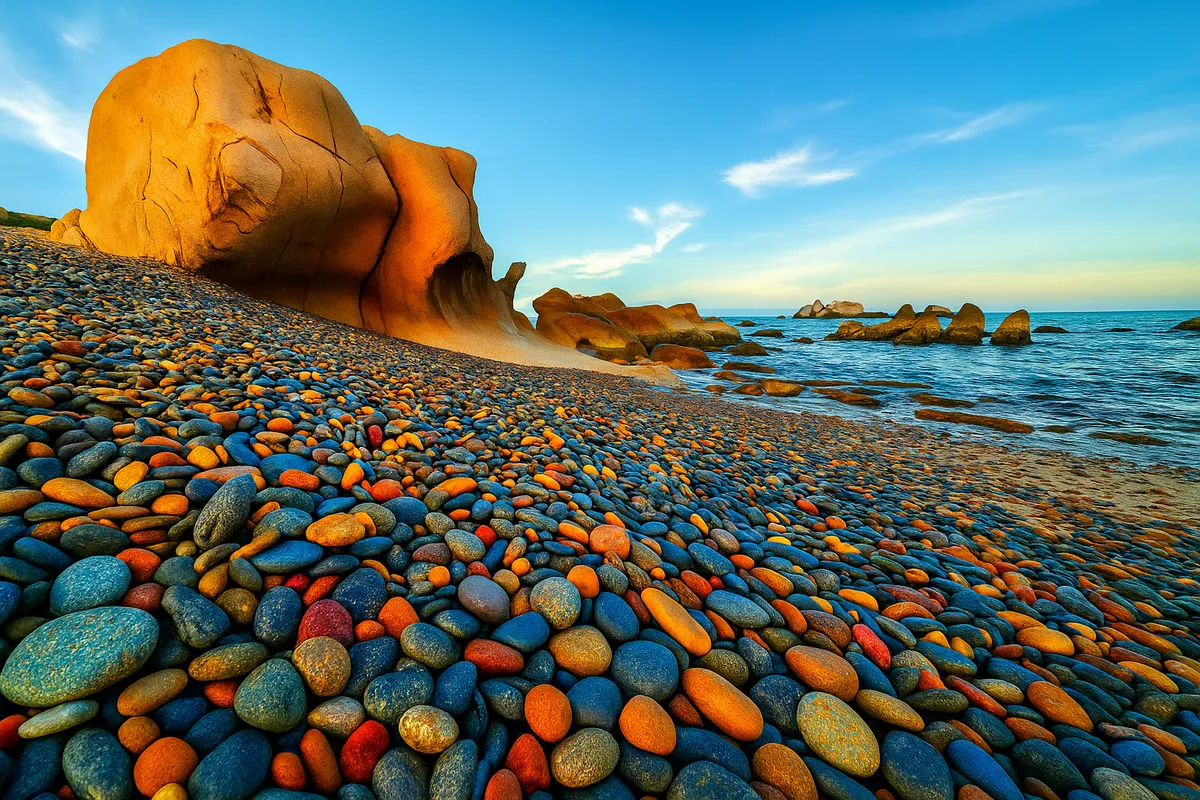Experience of traveling to Ba Be Lake from the perspective of an experienced person
- Monday, Jun 16, 2025, 19:46 (GMT+7)
Experience of traveling to Ba Be Lake from the perspective of an experienced person
Ba Be Lake is not a strange name on Vietnam's travel map, but to truly understand, explore, and fully embrace the untouched beauty of this destination takes more than a few lines of introduction. Hidden deep within Ba Be National Park, located in Ba Be District of Bac Kan Province, this place is often referred to as the “green gem of the Northeastern mountains” thanks to its unique ecosystem of a freshwater lake nestled among towering limestone mountains. Through the eyes of someone who has traveled, listened, and learned from both local people and seasoned visitors, the journey to Ba Be is not just a trip, but a meaningful dialogue with nature and the highland culture.
The first question that often comes up is how to get to Ba Be in the most convenient and affordable way. Depending on your starting point, there are various options. From Hanoi, the most flexible and practical choice is to take a coach from My Dinh or Gia Lam stations, following the Hanoi – Cho Ra route. The ticket price ranges from 150,000 to 200,000 VND and the journey takes about five to six hours. Some buses offer shuttle service straight to homestays in Pac Ngoi Village, which is very convenient for first-time visitors. For groups or travelers who prefer independence, renting a private car or self-driving is also worth considering. The route from Hanoi through Thai Nguyen to Bac Kan has been significantly improved. Just remember to refuel in Cho Ra Town, as the stretch of road to the lake is quiet and gas stations are rare. If you're coming from Ho Chi Minh City or Central Vietnam, it's best to fly to Noi Bai Airport and then continue by coach or rented vehicle. For those prioritizing the experience, taking a train from Hanoi to Thai Nguyen and renting a motorbike to explore the Thai Nguyen – Phu Thong – Ba Be route offers a scenic mountain ride that is both peaceful and stunning.
The cuisine in Ba Be is simple yet flavorful, reflecting the essence of highland life. A must-try dish is grilled fish from Ba Be Lake, freshly caught and marinated with indigenous spices like mac khen and doi seeds, then grilled over glowing charcoal. A rustic meal that surprises with its delicate natural sweetness and forest aroma. Other local favorites include smoked sausage, hung pork, five-color sticky rice, and soup made from wild vegetables picked near mountain streams. In Pac Ngoi and Coc Toc villages, there are many small eateries run by Tay people serving authentic dishes at reasonable prices. A useful tip is to follow where the locals eat lunch – those places usually offer the best flavors and fair prices. If you visit between October and January, you might be lucky enough to try grilled moss, a rare and seasonal delicacy of the lake region.
In terms of accommodation, Ba Be offers a range of options suited to different travel styles. Homestays in Pac Ngoi Village are the most popular thanks to their lakeside locations and warm hospitality. Traditional stilt houses with yin-yang tiled roofs, wooden floors, cozy bedding, and views over the lake offer guests a chance to feel truly immersed in nature. Prices range from 150,000 to 300,000 VND per person, often including meals. For more privacy, some homestays now offer enclosed rooms with full amenities. For those seeking a more luxurious or family-oriented experience, Ba Be Legend Resort is a fitting choice, offering high-quality service and stunning views of the surrounding valleys. In recent years, camping services by the lake have also become available, with tents and gear provided by local tour operators. Sleeping by the water with the sound of insects and mist rising over the surface is a magical and unforgettable experience.
Simply taking a boat around the lake doesn’t do Ba Be justice. Unique and thrilling experiences include kayaking, cycling through Tay villages, and trekking through the primeval forest to Puong Cave, where the river flows directly through the mountain. In summer, you can cool off at Leng or Ma streams with crystal-clear waters. In winter, the Long Tong Festival held by the Tay people opens a colorful world of folk traditions. Another special activity is joining local fishermen for early morning fishing, when the lake is still wrapped in mist and the first rays of sunlight gently touch the mountain peaks. Few places can offer such a sense of slowing down in nature while engaging with a deeply rooted culture.
Photography in Ba Be is something that leaves many visitors in awe. The most captivating moments are at dawn or sunset. In the morning, the lake is shrouded in mist and dugout canoes glide as if through a dream. In the evening, golden sunlight bathes the forests, reflecting on the water surface. Favorite photo spots include the Pac Ngoi boat dock, the lakeside path beside terraced rice fields, the palm hill behind Coc Toc, and the stream leading to Dau Dang Waterfall. A small tip bring a wide-angle lens and slow shutter speed when capturing waterfalls to create a smooth flowing effect. For portraits in traditional Tay indigo clothing, choose backdrops such as limestone cliffs or wooden boats to enhance the cultural depth of the shot.
There are some important notes to make the trip more complete. First, avoid traveling during national holidays or peak weekends, as tourist numbers can surge, leading to full accommodations and long waits for boats. Second, mobile signal can be weak in certain areas of the national park, so it’s wise to download offline maps and save important contacts in advance. Also, avoid booking meal combos too early, stay flexible with each meal to avoid being tied to strict schedules. During the dry season from January to March, attractions like Dau Dang Waterfall may not be at their best, so consider forest hikes or exploring Hua Ma Cave instead. If you visit during the rainy season, pack a lightweight raincoat and waterproof covers for your electronics. Female travelers should bring soft-soled, anti-slip hiking shoes for navigating wet and rocky terrain safely.
Ultimately, the journey to Ba Be should not end at discovery, but become an act of learning and connection. Listening to the stories of Tay people by the fire, understanding agricultural rituals through local festivals, or simply sharing a home-cooked dinner with a homestay family, these are the moments when the journey transcends into memory. Ba Be is not a place for the hurried. It is for those who want to pause, breathe in the scent of damp grass, and hear the sounds of a world that does not rush. A journey deep enough to ensure that everyone who leaves carries with them a small piece of its nature and people.

 CHECKIN.VN
CHECKIN.VN








Share on